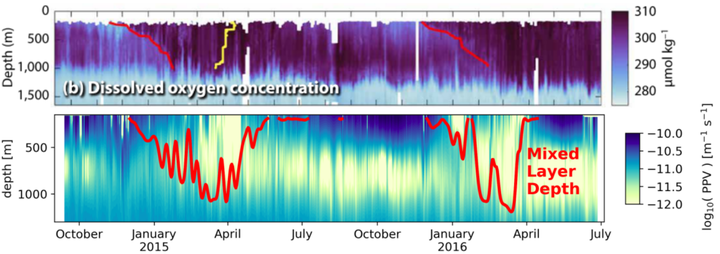Oxygen cycling in the Irminger Sea

The high latitude North Atlantic has an outsized impact on global climate as it is one of the few regions where deep and intermediate water masses are formed. These water formation sites are the windows through which gases such as carbon dioxide and oxygen are transferred from the atmosphere to the ocean interior. While traditionally the Labrador Sea has been considered the primary location for convective mixing and gas uptake in the subpolar North Atlantic, in recent years deep convection has also occurred in the Irminger Sea, and observations have shown that processes in the Irminger Sea play a significant role in meridional overturning circulation variability. The variability in carbon dioxide and oxygen uptake in the region is likely also significant, yet has not been characterized to the extent that heat and freshwater fluxes have. The goal of work proposed here is to use observations from the Ocean Observatories Initiative Irminger Sea Global Node together with shipboard and profiling float observations to obtain a basin-wide view of oxygen cycling on seasonal to interannual time scales. We focus on oxygen as it is by far the most sampled biogeochemical variable in the region.
This project is an interdisciplinary collaboration between Isabela Le Bras, Roo Nicholson (WHOI), Hilary Palevsky (BC) and Leah McRaven (WHOI). Funding provided by WHOI Internal Burke OOI Innovation Fund.